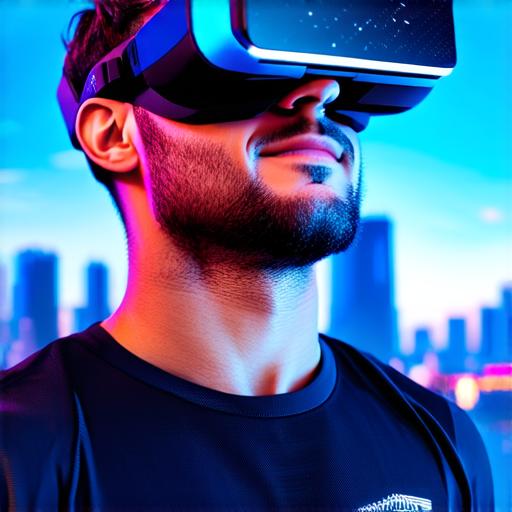1. Comfort and Fit:
One of the most important factors to consider when choosing a VR headset is comfort and fit. A poorly fitting headset can cause discomfort and even lead to motion sickness, which can negatively impact the user’s experience. It is crucial to try on different headsets to find the one that fits your head the best and adjust the settings to achieve a comfortable fit. Comfortable VR headsets are lightweight, have adjustable lenses and straps, and provide ample padding to prevent any discomfort.
2. Field of View (FOV):
The field of view (FOV) refers to the angle of the display that users see when they look around in VR. A higher FOV allows for a more immersive experience as users can see more of their surroundings. However, a higher FOV can also cause motion sickness, so it is essential to find a balance that works for you. The ideal FOV depends on the type of application and user preferences. For example, a wider FOV may be suitable for gaming or immersive experiences, while a narrower FOV may be better suited for educational or training applications.
3. Resolution and Display Type:
The resolution and display type of the VR headset are also crucial factors to consider. Higher resolution displays provide a clearer image, while different display types (such as OLED or LCD) can affect the color accuracy and brightness of the image. It is essential to choose a headset with a high resolution and a display type that works well for your needs. For example, an OLED display may be more suitable for gaming or immersive applications, while an LCD display may be better suited for educational or training applications.
4. Tracking Technology:
The tracking technology used by the VR headset is also a critical consideration. Accurate tracking allows for more realistic movements in VR, while poor tracking can lead to lag or disorientation. It is crucial to choose a headset with advanced tracking technology that works well for your needs. Some VR headsets use ultrasonic sensors, infrared cameras, or magnetic tracking systems, while others combine these technologies. It is essential to research and compare the tracking technology of different headsets to determine which one is best suited for your application.
5. Connectivity and Compatibility:
Connectivity and compatibility are also vital factors to consider when choosing a VR headset. Some headsets require a separate computer or console to function, while others can be used standalone. It is essential to choose a headset that is compatible with your existing hardware and software. Additionally, some VR headsets may require specific graphics cards or processors to run smoothly, so it is crucial to check the system requirements before making a purchase.
6. Price and Budget:
Finally, the price and budget of the VR headset are also important factors to consider. There are many affordable options available on the market, but it is essential to choose a headset that meets your needs and provides a good value for money. By carefully considering these factors, developers can create immersive and engaging experiences that will captivate their users.

Recommendations:
1. Samsung Gear VR: The Samsung Gear VR is an excellent choice for developers looking for a mobile-based VR headset that is lightweight and easy to use. It has a high resolution and can be used with most Samsung smartphones, making it an ideal choice for educational or training applications.
2. Oculus Quest 2: The Oculus Quest 2 is an excellent choice for developers looking for a wireless VR headset that provides a great balance of comfort, performance, and affordability. It has a high resolution, advanced tracking technology, and can be used with most PCs or smartphones, making it an ideal choice for gaming or immersive applications.
3. HTC Vive Pro Eye: The HTC Vive Pro Eye is an excellent choice for developers looking for a high-end VR headset that provides the best possible graphics and display quality. It has a wide FOV, advanced tracking technology, and can be used with most PCs, making it an ideal choice for gaming or immersive applications.
4. PlayStation VR: The PlayStation VR is an excellent choice for developers looking for a VR headset that is optimized for the PlayStation platform. It has a high resolution, advanced tracking technology, and can be used with most PlayStation consoles, making it an ideal choice for gaming or immersive applications on the PlayStation platform.
Summary:
Choosing the right VR headset can be a daunting task, but by considering the key factors we have discussed in this guide, developers can make an informed decision that meets their needs and provides a good value for money. Whether you are a beginner or an experienced developer, there is a VR headset available on the market that will suit your needs and budget. By carefully considering these factors, developers can create immersive and engaging experiences that will captivate their users.
